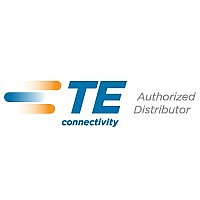327913-000 Tyco Electronics, 327913-000 Datasheet - Page 21

327913-000
Manufacturer Part Number
327913-000
Description
Connector Accessories Hexa Shield Adapter Aluminum Alloy Olive Drab
Manufacturer
Tyco Electronics
Type
Hexa Shield Adapterr
Datasheet
1.163665N003.pdf
(637 pages)
- Current page: 21 of 637
- Download datasheet (13Mb)
Catalog 1654025
Revised 12-04
www.tycoelectronics.com
Dimensions are in millimeters
and inches unless otherwise
specified. Values in brackets
are U.S. equivalents.
Electrical Interconnection System Design
Harness Design
This section provides
information about the basic
components in a harness
design, the factors to
consider in designing a
harness, and the Tyco
Electronics HarnWare
Harness Design CAD
software. With this informa-
tion and the selection tables
that follow, you will be able
to choose from this catalog
the right components for an
integrated military or high-
performance industrial
harnessing system.
The checklist on page 2-4
covers some of the factors
to consider in the design of
a harness.
Harness Components
Connectors and wires are
the two basic components
of a harness that need to be
specified. Once they have
been chosen, compatible
protection, shielding and
identification follow.
Connectors
Connectors come in two
opposite types: plugs and
receptacles. Both contain
contacts, usually made of
plated copper. The
contacts, called pins or
sockets, are joined to the
conductors and are
designed to mate or join
with contacts of the
opposite type.
(Continued)
Dimensions are shown for
reference purposes only.
Specifications subject
to change.
The front or joining end of
the connector is designed
to mate only with a connec-
tor having the right configu-
ration. The back end of the
connector is where the
wires are terminated to the
metal contacts.
Connectors for indoor or
internal use are generally
not designed to resist mois-
ture. Connectors that will be
exposed to moisture are
generally sealed to meet a
specific requirement.
Wires
In this discussion, a wire is
defined as an insulated
conductor and a cable is
defined as two or more
wires with or without a
common jacket or shield.
Conductors are usually
made from copper.
A copper conductor can be
solid or, when flexibility is
important, can consist of
smaller strands of copper
wire twisted together. The
strands can be coated with
tin, nickel, or silver to make
them easier to terminate or
more resistant to corrosion.
Conductors are sized in
metric units (mm
AWG (American Wire
Gauge), a holdover from
the days when wire was
made of steel in steel mills.
The AWG refers to the
USA: 1-800-522-6752
Canada: 1-905-470-4425
Mexico: 01-800-733-8926
C. America: 52-55-5-729-0425
2
) or by
number of passes it takes to
draw the wire down to the
required size - the larger the
AWG, the smaller the wire.
Making a 26 AWG wire, for
example, requires more
passes through reduction
dies than are required for a
4 AWG wire.
A 26 AWG stranded wire,
however, is made of many
smaller wires, such as
seven strands of 32 AWG
wire (sometimes shown as
7/32 or 7x32).
The choice of insulation for
a conductor depends on a
number of factors:
I
I
I
I
I
I
Operating, design, and
excursion temperatures
of the system
Size and weight
limitations
Mechanical performance
desired
Flexibility requirements
Resistance to various
fluids
Specialized requirements,
such as:
- low fire hazard or low
- low outgassing
South America: 55-11-3611-1514
Japan: 81-44-900-5102
Singapore: 65-4866-151
UK: 44-1793-528171
halogen
2-3
2
Related parts for 327913-000
Image
Part Number
Description
Manufacturer
Datasheet
Request
R

Part Number:
Description:
Circular DIN Connectors MALE CABLE CONNECTOR 3 WAY
Manufacturer:
Amphenol

Part Number:
Description:
Circular DIN Connectors MALE CABLE CONNECTOR 3 WAY
Manufacturer:
Amphenol

Part Number:
Description:
Circular DIN Connectors MALE CABLE CONNECTOR 3 WAY
Manufacturer:
Amphenol

Part Number:
Description:
Circular DIN Connectors MALE CABLE CONNECTOR 3 WAY
Manufacturer:
Amphenol

Part Number:
Description:
Battery Interconnection System for Portable Electronics; BU CONN FS6 8POS DIP TYPE ASSY ( AMP )
Manufacturer:
Tyco Electronics

Part Number:
Description:
Manufacturer:
Tyco Electronics
Datasheet:

Part Number:
Description:
Manufacturer:
Tyco Electronics
Datasheet:










